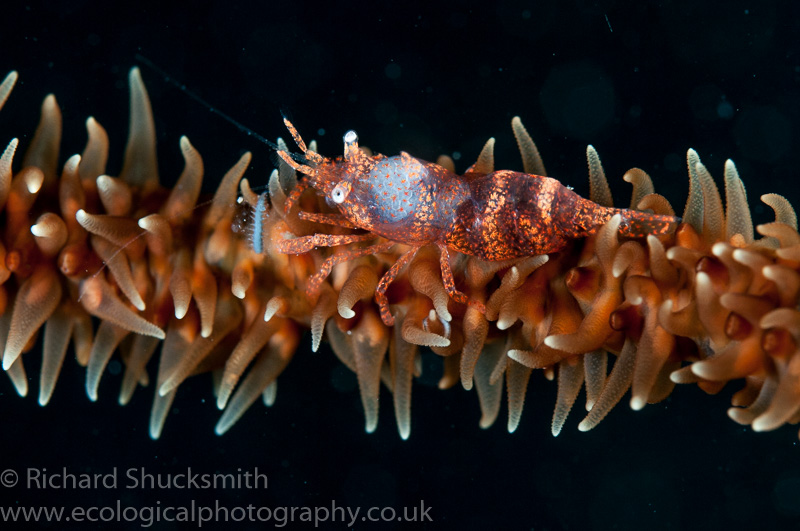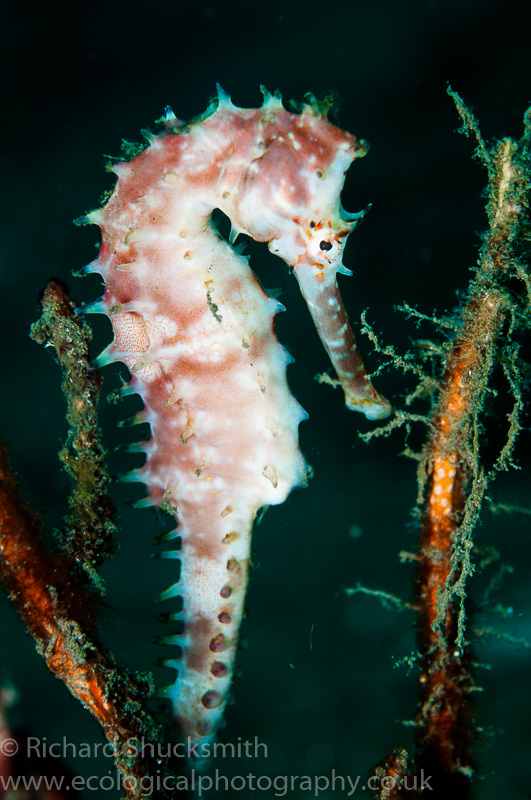A Guide to Underwater Macro Photography

Underwater macro photography allows you to explore the amazing array of small, weird and wonderful creatures that live in our seas. The smallest of animals are magnified through the cameras lens, showing the vibrant colour and fine detail. Many marine biologists I know use macro photography to help them identify small marine creatures because they are so magnified the distinguishing features are easier to see in the image than in the field.
Previous: “An Introduction to Underwater Photography“



Macro photography is one of the most rewarding and easiest forms of underwater photography. A good eye and an understanding of the animal you want to photograph is needed to find the small creatures that are often well hidden. The idea of macro photography is to capture the subject at actual or larger than life size.
There are various cameras and housings that can be used to shoot macro underwater. Most, if not all, underwater cameras have the ability to shoot macro. Whether you are using a compact camera or a digital DSLR, it’s important to understand how your camera works. For example, with compact cameras you may need an additional close-up lens or wet lens that fits on the front of the housing. For DSLR cameras you will need a specific macro lens for that particular camera make. In this article I am not going into specific camera setups as there is not enough room to list and go through all the different cameras. Furthermore, I do not know the setup of all the different cameras that can be taken underwater as there are so many. For different makes and models of cameras or if you are looking at purchasing an underwater set up, talk to other underwater photographers, specialist underwater camera shops and do your own research via the web. However I will cover the approach and important considerations when shooting macro photography underwater.

As I mentioned in my previous underwater introduction article, you need to position the camera lens close to the subject to fill the frame. Cutting down the amount of water between the lens and the subject helps with sharpness and produces better colour. You will need to add artificial light, such as an underwater strobe, as this will be the main light source. Strobe position is very important and you need to make sure that the strobe lights up the subject. Good strobe makes are Inon and Sea & Sea.


When photographing macro subjects depth of field is also very important. Using macro lenses increases the magnification which affects depth of field – the amount of the subject that is in focus. To shoot a subject with a good depth of field, we need to shoot with a small aperture opening, such as f/16 or smaller, to get as much as the animal in focus as possible. A spotting light can help with focusing, however a light which is too bright can scare the animal or make them retract from the light; a small spotting torch can be fitted with a diffuser to reduce this issue. Some good options are the Epoque EL-1000L, the Inon LE700-W, and the Sola 1200 Video light.

Depending on what animal you are photographing, if they have eyes then focus on them and make sure they are sharp. Eyes are important as this gives the viewer of the image eye contact with the animal and is something that we are naturally drawn to. Another way to make the image more intimate for the viewer is to shoot at the same level of the animal and not looking down on to the subject. An image shot looking down on to the animal in most cases, creates a flat image. Whereas if you are looking straight at the animal, at the face, it makes for a much better composition and adds depth to the image.

When working with macro subjects or any subject underwater, it is important to have good buoyancy skills, so as not to disturb the bottom creating plumes of sediment into the water that will ruin your shot. It is also important to approach the animal slowly and carefully so as not to scare them. Just like on land if you approach animals too fast you can spook them, making them move away. Sometimes you can find a great subject but it is in a difficult position, and in this case you are better looking for another subject in a better position. At no point should you touch or move animals in a bid to get them in a ‘better’ position, if you do not know what the species is, it could easily be poisonous which is part of its defence mechanism against predators.

When shooting macro or any images underwater, have a slow and thoughtful approach towards your subject. Think about the composition of the image, and if a subject stays in the same position try a variety of angles, strobe positions and camera settings. Most of all experiment, and as you gain more confidence in shooting macro you may want to try different techniques, like shooting a macro subject on a black background or back lighting the subject.





